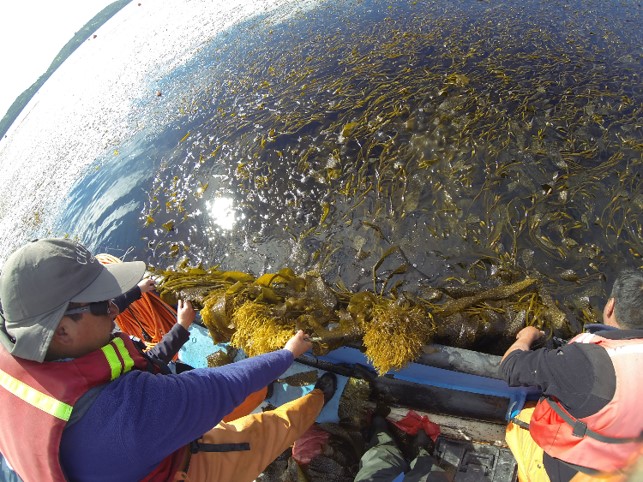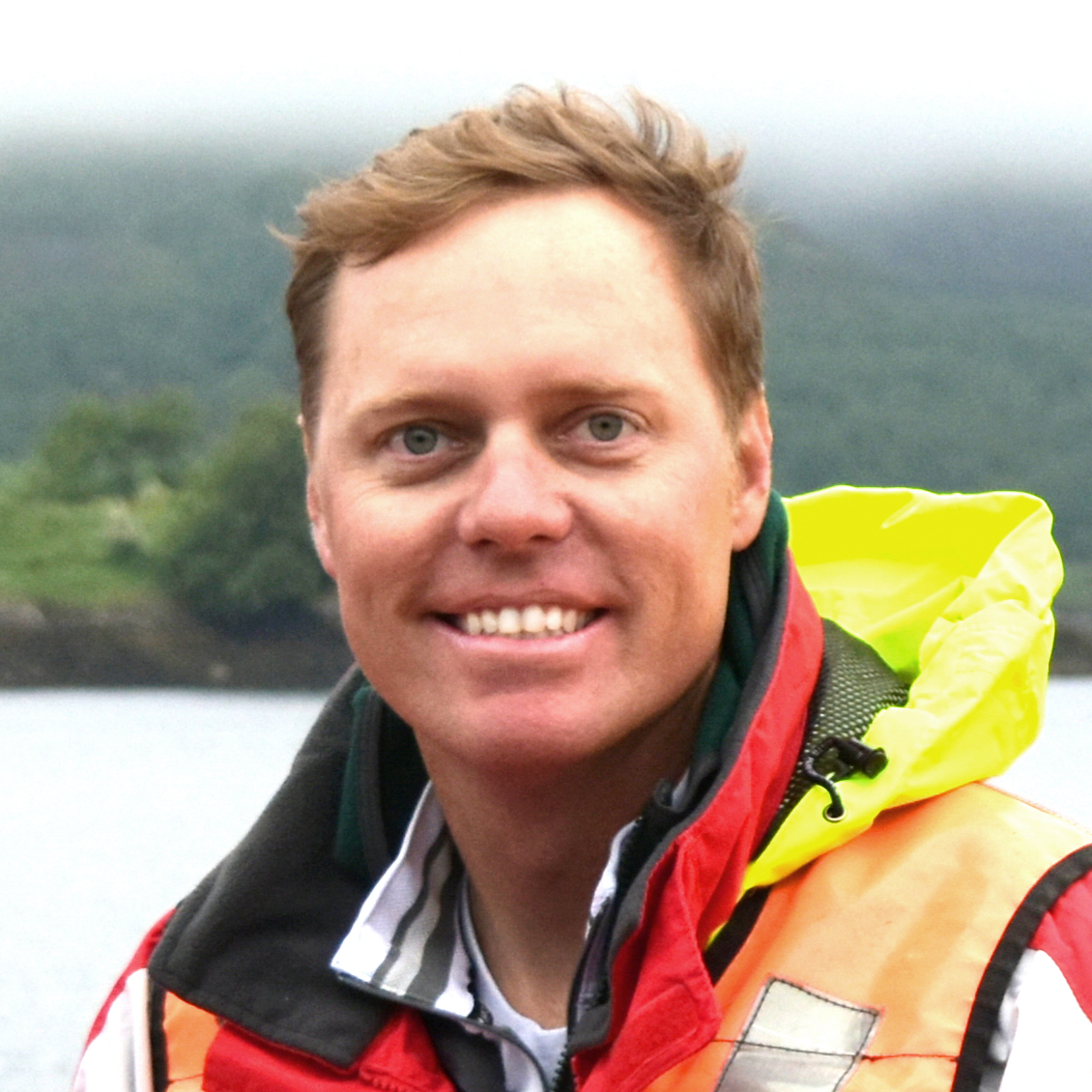Coastal Conversations Podcast: Episode 4
Dive into our latest Coastal Conversations podcast to discover how NCCOS is advancing marine spatial planning! Learn how we balance economic activities with conservation efforts, with a focus on supporting seaweed cultivation and offshore aquaculture. Hear from experts like Dr. James Morris and Meghan Balling as they share insights into our innovative tools and collaborative efforts. Don’t miss this episode highlighting our projects and the future of sustainable aquaculture!
Listen here:

Episode Transcript


Kevin: Marine spatial planning addresses the growing competition in a busy ocean among various users, striving to balance economic activities with conservation efforts. With a growing interest in the field of seaweed cultivation and the many products that can be made from them, the NCCOS Coastal and Marine Planning Team is playing a key supporting role in this dynamic and growing field.
[waves crashing and birds chirping]
Kevin: Welcome, you’re listening to Coastal Conversations, the National Centers for Coastal Ocean Science podcast, I’m Kevin McMahon.
With a focus on sustainable development, the Coastal and Marine Planning Team’s process involves collaboration among state and federal government agencies, industries, tribes, and conservation groups to make informed decisions about resource use and protection.
Here’s Dr. James Morris, head of the Coastal and Marine Planning Team, to explain a little more about the marine planning team’s work.
James: We develop spatial models that produce heatmaps, which help us visualize and understand the various conflicts in an ocean region. These models, ranging from the simple to the complex, sometimes include hundreds of data layers and are informed by coastal communities through various marine spatial planning processes.
Kevin: And now here’s Meghan Balling, the Marine Spatial Planning Team program coordinator, elaborating on James’ remarks:
Meghan: Through innovative tools and technology, such as web-based geospatial platforms, NCCOS enables transparent and efficient offshore planning, supporting growth of the New Blue Economy while safeguarding marine ecosystems. By integrating the best available science with input from local and interested parties, coastal and marine planning seeks to foster sustainable growth and resilience in coastal communities, ultimately benefiting both society and the environment.
Kevin: Some examples of the team’s successes include a project completed in 2023 titled, “Aquaculture Spatial Planning in Florida: A Pilot Study to Assess Potential Offshore Aquaculture Zones along Florida’s Gulf Coast.” With growing interest in offshore aquaculture, both in Florida and throughout the U.S., the Florida Department of Aquaculture and Consumer Services initiated a partnership with NCCOS in 2019. Their goal was to work together to investigate coastal ocean areas in state waters along Florida’s Gulf coast that may be suitable for offshore aquaculture development. Marine spatial planning efforts included a suitability analysis to ensure that potential impacts to sensitive species and habitats, as well as other marine industries like fishing and shipping, would be minimized.
Another project the team worked on was modeling to support designation of the “Aquaculture Opportunity Areas for Federal Waters of the United States Exclusive Economic Zone”. This work was important because it was the first regional-scale spatial suitability model and paved the way for spatial planning for other industries such as offshore wind. This work also helps to accelerate growth of domestic aquaculture in the U.S., a main goal of the Presidential Executive Order Promoting American Seafood Competitiveness and Economic Growth issued in May 2020. This Executive Order designated NOAA as the lead federal agency to support the identification of 10 Aquaculture Opportunity Areas (or AOAs) in various regions of the U.S. An AOA is a small, defined geographic area of the ocean that has been evaluated to determine if it could be potentially suitable for commercial aquaculture. The goal of the AOAs is to gather comprehensive input from interested parties and conduct scientifically rigorous spatial planning analyses to minimize use conflicts and assist in completing advanced environmental reviews. The resulting Atlases, led by the Coastal and Marine Planning Team, include technical information that may be used to support decision makers in identifying areas that may be suitable for AOAs.
Here’s Meghan again explaining a partnership opportunity that has recently come about:
Meghan: The Department of Energy’s Advanced Research Project Agency for Energy – or ARPA-E for short – has a new program: the Macroalgae Research Inspiring Novel Energy Resources Program or MARINER. The MARINER program is working on developing tools to enable the United States to become a global leader in the production of marine algae. ARPA-E estimates that the United States could produce at least 500 million dry metric tons of macroalgae per year. Such production volumes could yield about 2.7 quadrillion BTUs of energy in the form of liquid fuel, roughly 10% of the nation’s annual transportation energy demand. An added bonus of growing this much seaweed is that algae, as a plant that photosynthesizes, removes carbon dioxide from the atmosphere. That could mean that these AOAs, in one small part, could help to offset climate change.
Kevin: Seaweed cultivation in Europe is an upcoming industry and is showing great promise in terms of growth, however, challenges in regulations, cost, and market viability could affect the pace of this growth. The demand for edible seaweeds (or marine algae) is also increasing. Seaweed grows in a variety of forms and colors in the ocean, as well as in freshwater environments. The varying biochemical compositions and properties in various species of seaweeds make them a valuable material, and their range of applications is growing as current R&D technologies are refined and new discoveries are made. Products made from cultivated seaweed include: animal feed, cosmetics, bio-based chemicals for various industries, fertilizers, biofuel, and high-quality building insulation, among others. That makes this growing sector in aquaculture a potential game changer.
Here’s Meghan once again discussing yet another partnership opportunity that has come about:
Meghan: Ocean Rainforest—an innovator in sustainable seaweed aquaculture—has paved the way for offshore seaweed farming in Southern California. During phase one of the project, Ocean Rainforest obtained a permit for a pilot-scale kelp aquaculture demonstration farm in U.S. federal waters, which is part of the groundbreaking MacroSystems, an international collaboration initiative of highly regarded researchers and entrepreneurs in the seaweed industry. Our spatial planning experts played a key role in phase one of this project, supporting the site suitability study required for Ocean Rainforest’s permit application to the U.S. Army Corps of Engineers. The permit is now being used to test a variety of technologies that could have wide-reaching effects on the scalability and economic viability of seaweed cultivation across the country.
Kevin: At the 13th International Seaweed Conference hosted by the EU in June of 2024, Dr. Morris will be a keynote speaker with a presentation, “AquaWhere? The science of siting aquaculture for sustainable industry growth.” The conference, held this year in the Faroe Islands, Denmark, highlights the international interest in seaweed aquaculture and the need for the kind of support the Coastal and Marine Planning Team can provide. The team will also visit a near-by Ocean Rainforest site, the innovative approach Meghan just spoke about.
Here’s Dr. Morris speaking about his hopes for the conference.
James: It’s my hope that by addressing the attendees at the conference, I’ll be able to share the capabilities and successes of not just the Coastal and Marine Planning Team, but the whole of NOAA as well. As we continue to explore and expand the potential of marine resources, our focus remains on balancing sustainable development with environmental stewardship. Through comprehensive spatial planning and innovative collaborations, we’re paving the way for a thriving Blue Economy that not only supports economic growth but also preserves the health of our oceans for future generations. It’s an exciting time to be part of this field, and I’m optimistic about the future of our marine ecosystems and industries.
Kevin: The Coastal and Marine Planning Team’s future is limitless. With the evolving and expanding innovations in using the marine environment to meet growing food, fuel, and living space challenges, the service’s the team provides can be used in any number of ways. The team’s contributions to the seaweed farming effort is just the most recent example of their work’s value and adaptability. You have been listening to Coastal Conversations, an occasional podcast from the National Centers for Coastal Ocean Science. Thank you for listening.
